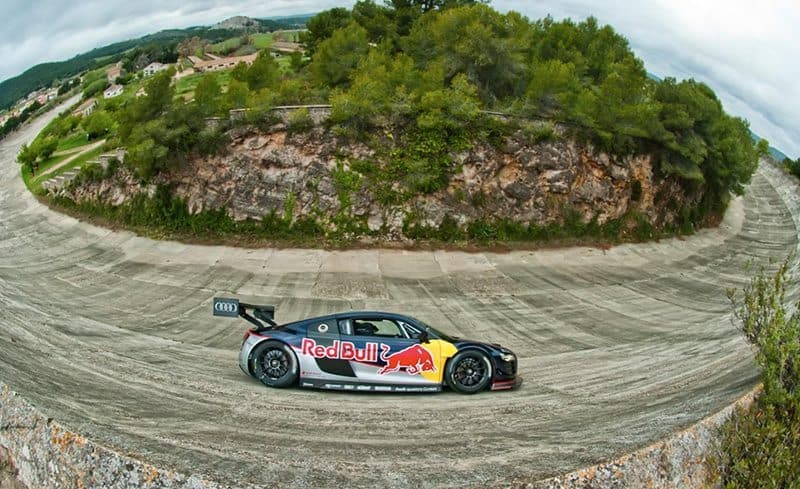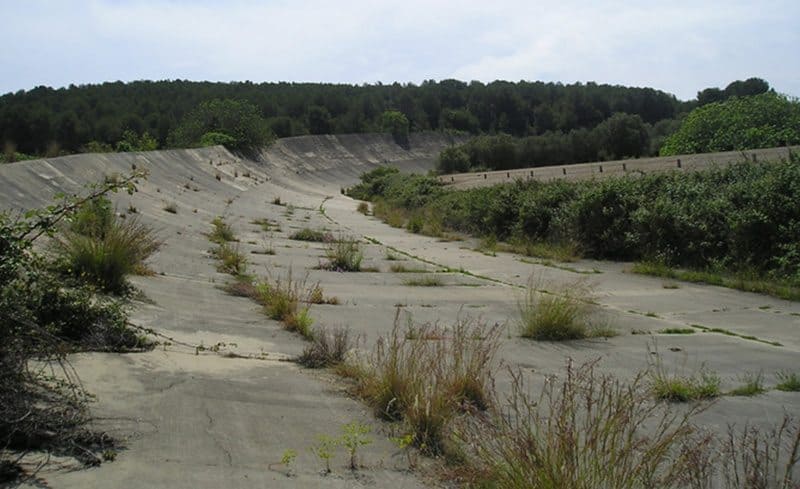GRAND Turismo racing takes on a new form in a few days when the Electric GT Championship gets going at the Circuit Paul Ricard in France.
The event, on November 25, will be the first of the world’s first 100per cent zero-emission GT series, which will presumably feature mainly Teslas.
French racing legend and Formula 1 Grand Prix winner Jean-Pierre Jabouille, Le Mans winner Stéphane Ortelli and EGT Drivers’ Club member Olivier Lombard took a race-prepared Tesla Model S around the 3 km circuit last week when the EGT people announced its headquarters would be built at the Circuit Pau-Arnos, with the new building the principal hub for test and development programs.
The region is set to become an incubator for technology and clean energy.
As part of the launch of Electric GT, celebrated artist Johannes Stoetter was commissioned to create a “racing’s past meets racing’s future” work on the historic Spanish Terramar circuit, which opened in 1923.
Stoetter, who claims Italian nationality despite his Dutch name, created a realistic 3D image on the concrete surface of a Tesla GT racer alongside a 1934 Bugatti Type 59 with a bit of help from Swedish artist Vilja Vitkute.
But while the Electric GT category is big news, the Terramar circuit itself is much more intriguing.
Few people had ever heard of it – because unfortunately the Autódromo de Sitges-Terramar wasn’t on the racing calendar for long.
It was a huge project, the brainchild of local Sitges auto identity Frick Armangue, who aimed turn the quiet seaside town about 30km from Barcelona, into an international motorsport mecca.
It took about a year, 4 million pesetas and 3.5 million kilograms of concrete to transform a rocky outcrop into a 2km circuit with daunting 60-degree banked turns.
It was a magnificent venue, one of the few banked circuits of the world.
Brooklands was first, in 1907, the came Monza in 1922 and Terramar was ready just a year later.
A fourth oval banked track, the Autodrome de Linas-Montlhéry, just outside Paris followed 12 months later.
Terramar, actually more of a jelly-bean shape than an oval, opened on 28 October, 1923, with a 200-lap Spanish Grand Prix for cars of up to 2.0litres.
Only seven of the 11 entrants arrived on the start line, among them prominent Brit racer Count Louis Zborowski, who was one of the world’s wealthiest young men, with his American Miller.
The event drew a big crowd and at the end of the 200 lapper, only five cars were still running, the winner being French driver Albert Divo, one of the top racers of the 1920s, at the wheel of a Sunbeam.
His average speed was an astonishing 155.89km/h. Zborowski was second, 56 seconds behind, with Alfonso Carreras a further 20 seconds astern in an Elizalde.
It was a great race and the track’s future looked good, although it tested every driver’s mettle and was sometimes referred to as ‘Terrordrome’.
There were no escape roads and the inside of the steeply banked curves were solid rock outcrops while anyone who overshot the outside would find be in space, way above tree level.
But it all came to a very abrupt end.
Senor Armangue and his committee were unable to pay the army of workers who built the great track.
The enraged workers then seized all the gate money, leaving the organisers in the embarrassing position of being unable to pay the winning drivers.
The world of motorsport instantly blacklisted Terramar and though the Catalan Motorsport Association tried to keep the place alive.
There were some motorcycle races in the early 1930s, but they didn’t make enough to keep it going, and the circuit was abandoned.
The lap record stood at 45.8seconds, clocked by Count Zborowski in the Miller, and it stood for 89 years!
Of course, that was largely because there were no other big races held, but it illustrates the great pace of the early 1920s. The record now stands at 42.6sec – set by Carlos Sainz in an Audi R8 LMS in a Red Bull promotion.
That’s 3.2seconds quicker, but in a 5.2litre V10 with 450kW, all-wheel drive and 7-speed sequential shift.
The Miller had an 88kW 2.0litre motor, driving the back wheels through a three-speed manual. And on the skinny tyres of the era.
Terramar is still there to this day, and in surprisingly good condition, thanks to quality construction and Catalonia’s temperate climate.
Car companies and clubs occasionally have functions there and the owners have a chicken farm and some sheep in the centre portion. There’s also talk of them trying to develop it into a resort.
But what could have been the pride of Spain is now known – by those aware of its existence – as the ‘ghost’ track or ‘the world’s loneliest track.’
An odd spot to promote the Electric GT Championship, but who knows, the spirit of Terramar might yet return.





















